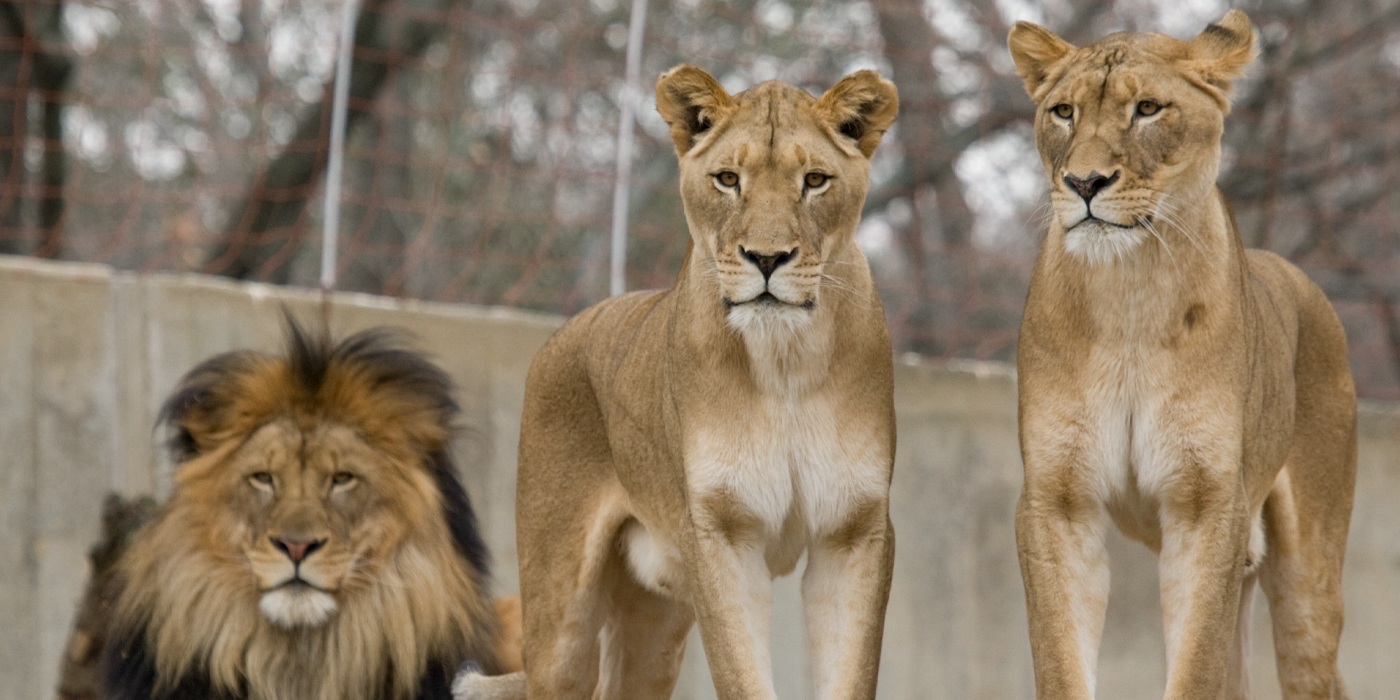10 Cool Things About Lions
Inspiring and intimidating. Fascinating and fierce. Few animals are as exalted as the lion, the largest carnivore of the African savannah.
But how much do you really know about lions?
1. Lions coordinate attacks on prey
Almost like running a football play, lions are known to move into complex formations and take on different roles before launching an assault on unsuspecting prey. One common strategy is for several lions to stealthily encircle their prey in a triangular pattern, with one lion launching an ambush attack that drives their fleeing prey towards the other hidden lions.
2. You will never hear a lion purr
Unlike a house cat, lions and tigers cannot purr to show contentment. This is due to an anatomical difference in the hyoid apparatus that lies in the base of the animal’s throat. Smaller members of the feline family—like house cats, bobcats and sand cats—have a hyoid bone that can vibrate against the cat’s larynx. This vibration is what creates that soothing resonant noise, or purr, in small cats. But in big cats, the hyoid bone is replaced by a fleshy length of muscle and cartilage, which is the same feature that allows lions and tigers to roar. This appendage is too soft to vibrate like a hyoid bone, which means it’s biologically impossible for a lion to purr.
So how do lions display their contentment? Often through a combination of growls, grunts and moans.
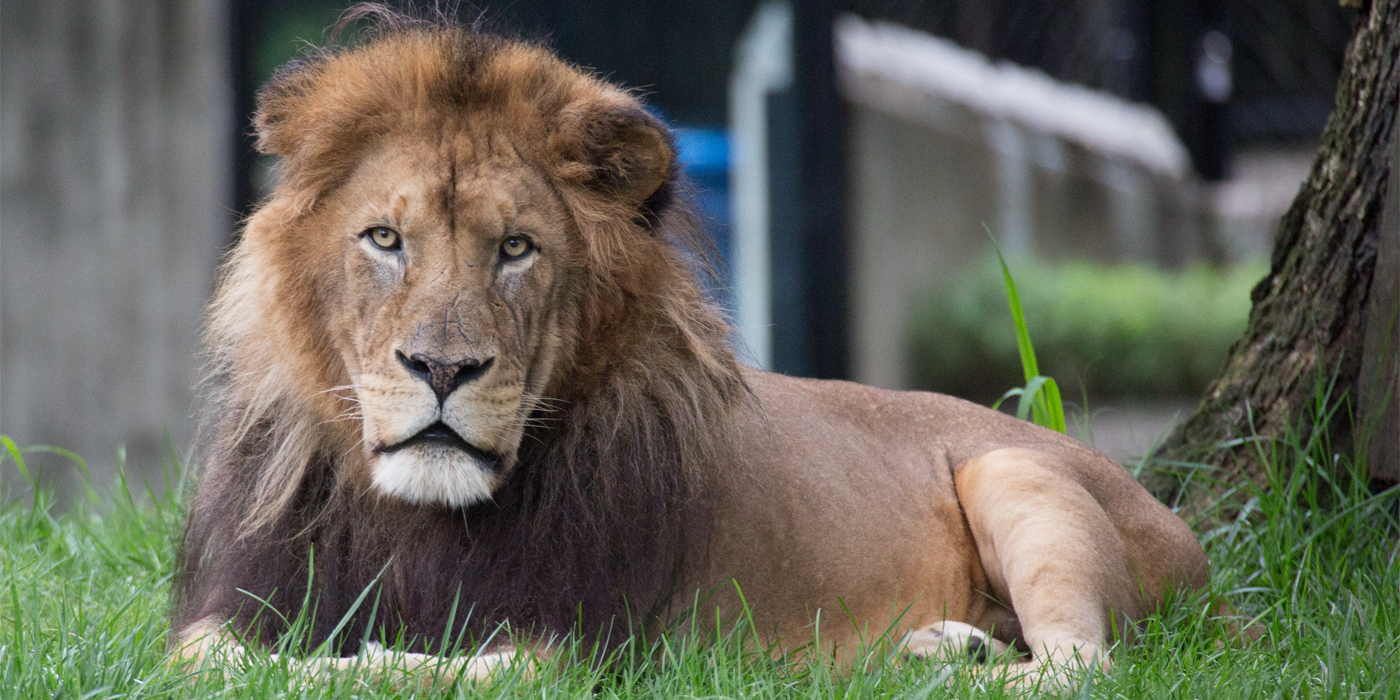
3. When it comes to manes, size matters… or does it?
There is still much debate among the scientific community as to why male lions grow such thick, luscious manes. Some evidence suggests female lions may be more attracted to males with longer, darker manes, which could imply that a healthy head of fur lets females know that the male is a desirable candidate for breeding. Another common theory is a thick mane offers some degree of protection against bites to the throat from challenging males. Mane growth appears to be linked to testosterone levels, so a big, furry mane might send a message to potential rivals that they should think twice before picking a fight.
4. Hunting strategies vary by prey species
A group of lions will often rely on ambushes to take down prey, but their exact hunting patterns vary depending on which animal they hunt. For smaller animals like gazelles and warthogs, lions will often attack with a straightforward ambush assault. For larger animals, like zebras or Cape buffalo, lions might choose to charge headlong at the herd, creating chaos and separating weak individuals who can be picked off more easily. One pride of lions in Botswana has been documented hunting elephants by isolating the calves from the rest of the herd, then driving them into a deep river and retrieving the carcass after their victim drowned.
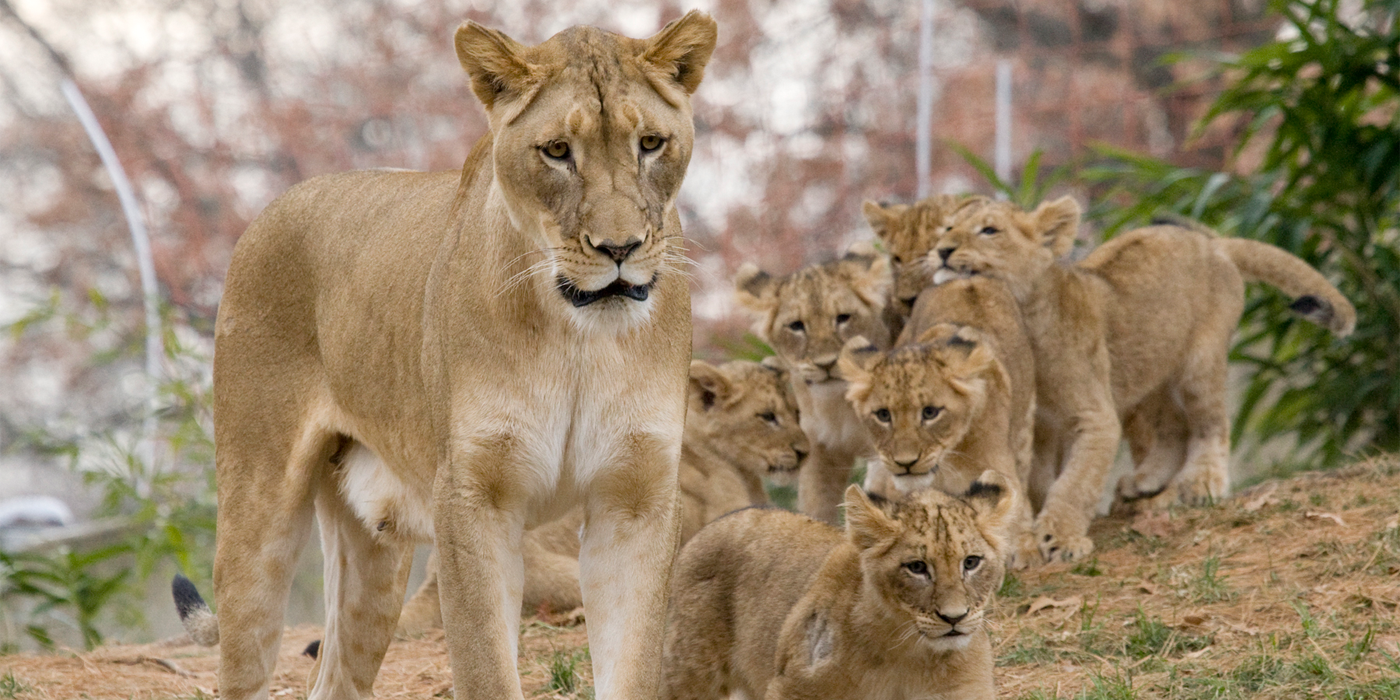
5. Lion prides don’t hang out in one big pile
Lions are the most social species of cats. A pride of lions usually consists of six to 20 females, along with one or two males and the group’s cubs. Lions form strong bonds with the other members of their pride, but they do not always travel in tight formation. Instead, large groups of lions will often split up into fractured groups and disperse across the landscape, which allows them to defend their territory more effectively. Pride members seem to stay in close communication with roars and often meet up for sharing kills, breeding and defending the territory from outside threats.
6. Male lions occupy a pride for 2-3 generations
While the basic social unit for female lions is a pride, the story is a little more complicated for males. Young male lions are typically kicked out of their birth pride around adolescence, when it becomes clear to the adult male that the younger male will become competition. After leaving their birth pride, adolescent bachelor males form coalitions, usually made up of two or three males from the same litter. These groups will wander their habitat until they are ready to take over another pride—usually by challenging the resident male, or males, to a fight. When one male group challenges another, death is typically the result for the losing side.
The new resident male, or males, in some cases, will defend the pride and serve as the females’ breeding partner for two to three generations, or about three to five years. After losing a challenge to a new coalition, the former resident male will either die or be driven out. Even if he survives, the losing male is forced into a nomadic life, and male lions typically do not live long lives as nomads.
7. Some Zoo employees can hear lion roars from their nearby homes
How loud is a lion’s roar? In the open savanna, a lion’s roar can be heard from over 5 miles (8 kilometers) away. One experiment measured a male lion roaring at 114 decibels—that’s nearly as loud as a thunderclap.
In Washington, D.C., a lion’s roar doesn’t travel quite that far. (By comparison, the lion exhibit at the Smithsonian’s National Zoo is about two and a half miles, or four kilometers, from the White House.) But the roars from the Zoo’s beloved lions are loud enough that local Zoo neighbors, including a few keepers who live nearby, can hear them roaring from inside their homes and apartment buildings.
8. No fiber in your diet? Try hair instead!
Thanks to their relatively short digestive tracts, lions are obligate carnivores. This means they rely almost entirely on meat to sustain themselves. Long digestive tracts allow herbivores and omnivores to gradually extract nutrients from plant materials, which obligate carnivores cannot digest. Lions may be seen eating grass, but this is usually when they are trying to settle an upset stomach.
Other non-meat items lions often ingest, such as fur, hair and bone fragments from their prey, add the bulk and structure necessary for a lion to cleanse and maintain a healthy bowel (or gut).
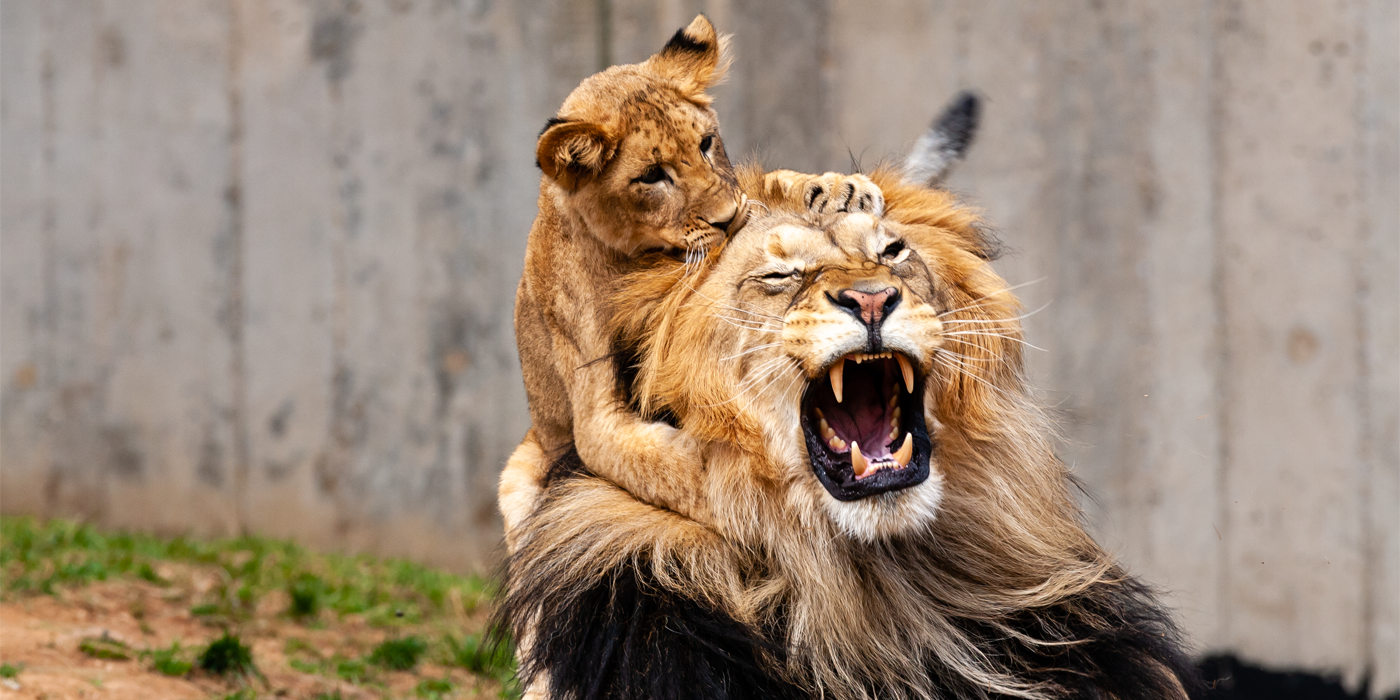
9. It is now (mostly) illegal to own a lion in the United States
Lions are considered vulnerable by the IUCN, with an estimated 24,000 lions remaining in the wild. However, by some estimates, between 5,000-10,000 big cats are owned privately in the United States. Many of these big cats, including lions, tigers and jaguars, are held in non-accredited facilities that are not connected to broader conservation efforts.
In December 2022, the Big Cat Public Safety Act was enacted to end the private ownership of big cats as pets, while placing new restrictions on commerce, breeding, possession and use of big cat species.
10. Lion populations are decreasing...but not everywhere
Wildlife experts do not consider lions to be at immediate risk for extinction. However, decades of habitat degradation, poaching and human persecution have taken their toll. The total number of lions has dropped by 43% in the past 21 years. As of 2023, lions occupy just 17% of their former African range.
Fortunately, organized efforts to protect lions and their habitats are starting to pay off. Local populations of lions appear to be increasing in some areas of Africa, and in the last decade, lions were spotted in wildlife reserves in Mozambique and Chad where they were thought to be locally extinct. The establishment of protected nature areas and wildlife corridors might prove to be the key to survival for lions and hundreds of threatened African species, but decades of work remain before these animals will no longer be at risk for extinction.
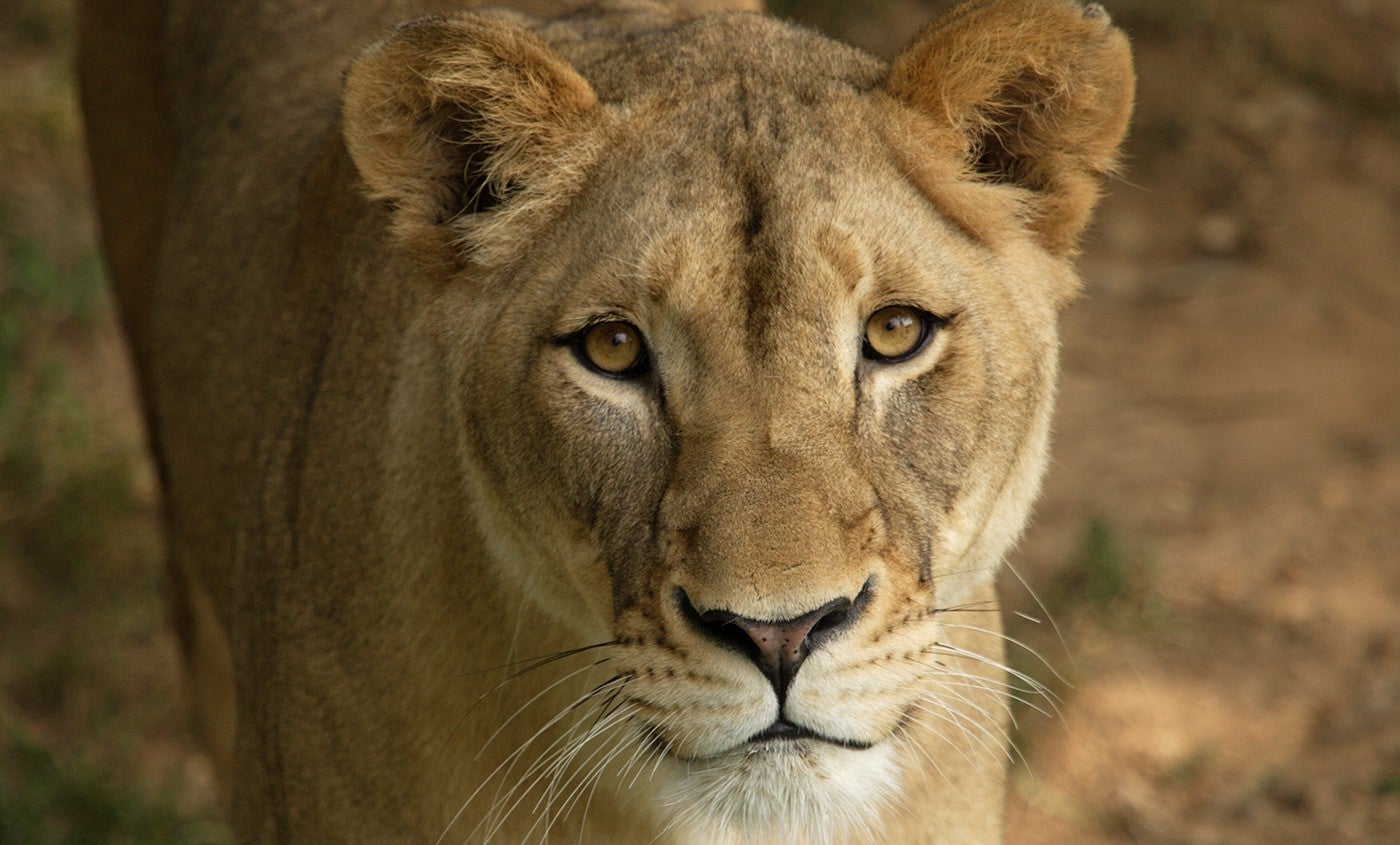
Interested in joining the effort to help lions? Consider volunteering at a local conservation organization or donating to the Smithsonian’s National Zoo and Conservation Biology Institute, which helps support animal care and wildlife conservation programs at home and abroad.
Also, you can learn more about the Zoo’s lions (and tigers) at the Great Cats exhibit, where the “Meet a Lion/Tiger Keeper” demo takes place at 11 a.m. daily.
